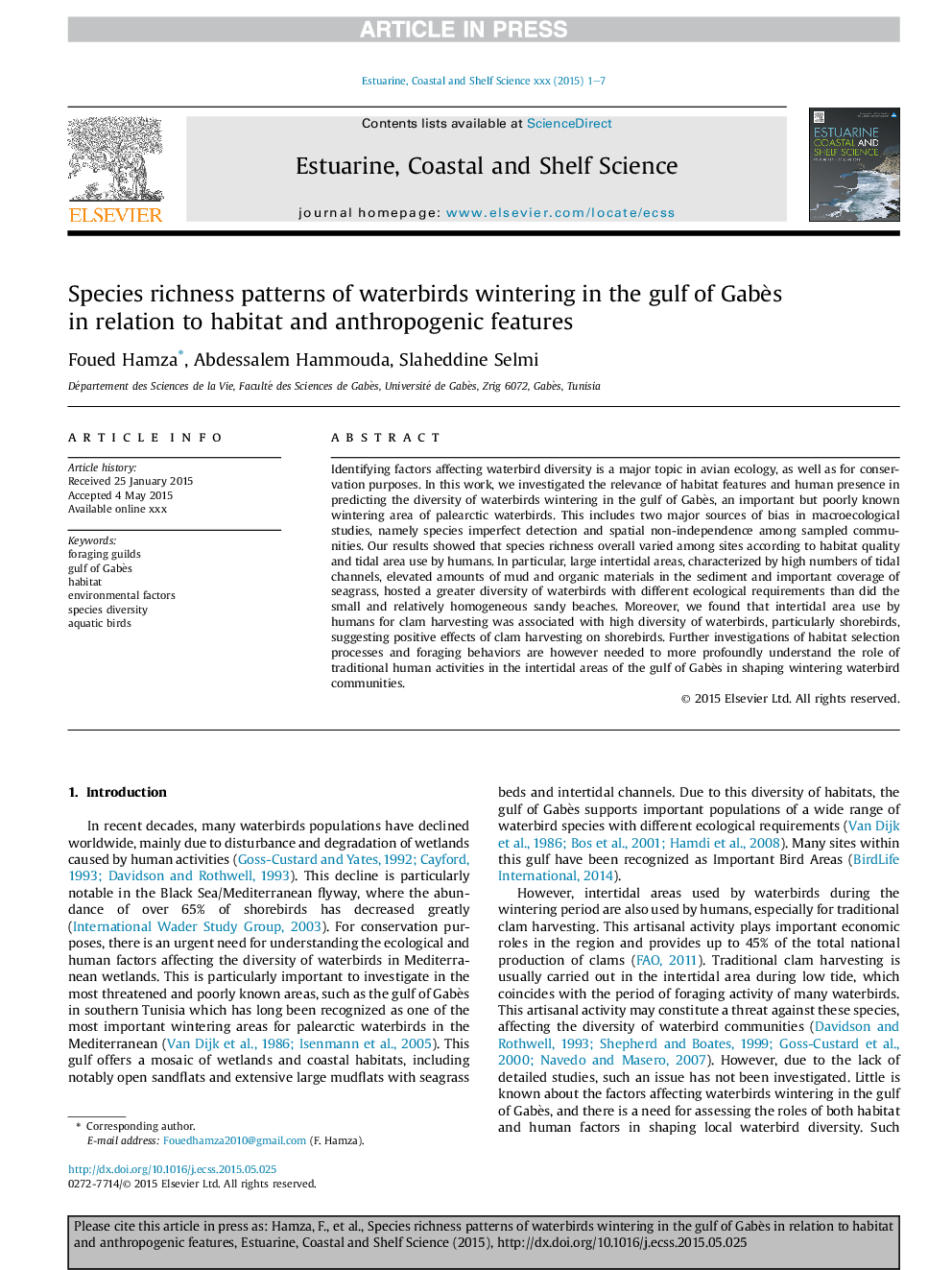| Article ID | Journal | Published Year | Pages | File Type |
|---|---|---|---|---|
| 6384649 | Estuarine, Coastal and Shelf Science | 2015 | 7 Pages |
Abstract
Identifying factors affecting waterbird diversity is a major topic in avian ecology, as well as for conservation purposes. In this work, we investigated the relevance of habitat features and human presence in predicting the diversity of waterbirds wintering in the gulf of Gabès, an important but poorly known wintering area of palearctic waterbirds. This includes two major sources of bias in macroecological studies, namely species imperfect detection and spatial non-independence among sampled communities. Our results showed that species richness overall varied among sites according to habitat quality and tidal area use by humans. In particular, large intertidal areas, characterized by high numbers of tidal channels, elevated amounts of mud and organic materials in the sediment and important coverage of seagrass, hosted a greater diversity of waterbirds with different ecological requirements than did the small and relatively homogeneous sandy beaches. Moreover, we found that intertidal area use by humans for clam harvesting was associated with high diversity of waterbirds, particularly shorebirds, suggesting positive effects of clam harvesting on shorebirds. Further investigations of habitat selection processes and foraging behaviors are however needed to more profoundly understand the role of traditional human activities in the intertidal areas of the gulf of Gabès in shaping wintering waterbird communities.
Related Topics
Physical Sciences and Engineering
Earth and Planetary Sciences
Geology
Authors
Foued Hamza, Abdessalem Hammouda, Slaheddine Selmi,
